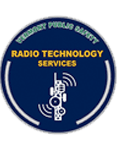Interoperability is the ability for emergency responders to utilize voice communication to communicate among municipalities, disciplines and levels of government, using a variety of frequency bands as needed and as authorized. Emergency responders often find it difficult to communicate within their own agencies, let alone with agencies in neighboring states, counties or cities. Interoperable communications is a key goal of the National Emergency Communications Plan (NECP). Most states, including Vermont, have designated a Statewide Interoperability Coordinator (SWIC) to provide a central coordination point for interoperable emergency communications efforts. The SWIC is located at the Vermont Department of Public Safety within the Radio Technology Services office.
Statewide Interoperability Coordinator (SWIC)
The SWIC’s primary function is to plan and implement the statewide interoperability program, guided by the NECP and the Statewide Communication Interoperability Plan (SCIP). The U.S. Department of Homeland Security, Office of Emergency Communications, supports SWICs through bi-annual meetings, quarterly newsletters, and other technical support. SWICs are not a federally mandated position, but such a designation may be needed in applying for some federal grants.
In Vermont, the dominant means of communication for first responders is through Land Mobile Radios (LMR). LMR is a wireless communication system for use in vehicles, called mobile units, or on foot, called portable units. An example of this type of radio would be a walkie-talkie. The push-to-talk system allows users to communicate with a dispatching center and with other first responders at the scene of an emergency. However, because the radios are programmed to different frequencies and different frequency bands, first responders from different disciplines and organizations may be unable to talk with each other at an on-scene emergency. DPS is working on several initiatives to provide alternate interoperable radio coverage and explore avenues to use emerging technology.
Vermont Communications System (VCOMM)
VCOMM, or the Vermont Communications System, is a voice interoperable system that operates on the VHF and UHF bandwidths and connects first responders within a state coverage area to a dispatch center. Within Vermont’s SCIP are plans to promote this system and provide training exercises for first responders to ensure VCOMM can be effectively used when needed.
Nationwide Public Safety Broadband Network (NPSBN)
With the buildout of the Nationwide Public Safety Broadband Network (NPSBN), the public safety community is learning more about new applications and functions that can be used in an emergency response. The NPSBN will provide a cellular type coverage to first responders, with priority and pre-emption features. The network is being built by AT&T. The federal agency formed to ensure the building of the network is called FirstNet or the First Responder Network Authority. FirstNet awarded the national contract to AT&T in 2017. Interoperability features are an important part of the NPSBN development. You can learn more about FirstNet in Vermont by going to the web page on FirstNet on this site.
Statewide Communication Interoperability Plan
The Department of Homeland Security’s Office of Emergency Communications requests states to provide the office with updates on SCIP activities. A SCIP includes goals, specific action steps and defined methods of measuring progress toward accomplishing a plan goal. The 2020 SCIP provides DPS with action steps toward improving emergency communication interoperability.
2020 Vermont Statewide Communication Interoperability Plan

